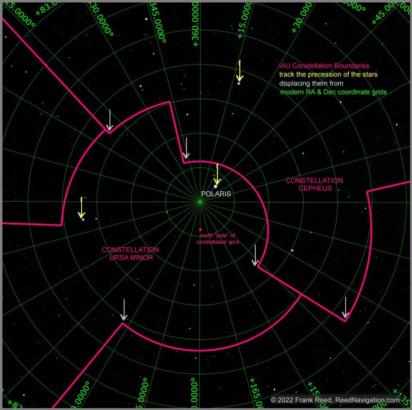
NavList:
A Community Devoted to the Preservation and Practice of Celestial Navigation and Other Methods of Traditional Wayfinding
From: Robert H. van Gent
Date: 2022 Feb 23, 10:07 +0000
Hi Frank,
The IAU constellation boundaries were actually established in epoch 1875.0 coordinates, not 1925.0 coordinates, so the combined skew and displacement in modern star atlases is a bit
larger.
https://www.iau.org/public/themes/constellations/
http://www.ianridpath.com/boundaries.html
https://pbarbier.com/constellations/boundaries.html
rvg
From: NavList@navlist.net <NavList@navlist.net>
On Behalf Of Frank Reed
Sent: 22 February 2022 21:15
To: Gent, R.H. van (Rob) <R.H.vanGent@uu.nl>
Subject: [NavList] Precession of official constellation boundaries
Not exactly celestial navigation, but of peripheral interest, I hope.
The offficial IAU boundaries of the constellations were established in epoch 1925 coordinates. These boundaries have precessed and continue to precess. Mostly, this is good thing because they generally track the stars. Polaris
will remain in the constellation Ursa Minor for a very long time (until it glides out under the power of its own proper motion). But the constellation boundaries were composed of meridians of right ascension (RA, or 360°-SHA) and arcs of small circles of declination.
These now look a bit odd since they no longer line up with the modern coordinate grids. In the image below we can see the boundary of Ursa Minor, near Polaris, is a circular arc, but it's centered on the "wrong" pole. The coordinates have precessed nearly
50 minutes of arc in the time since the constellation boundaries were formally defined.
Frank Reed







